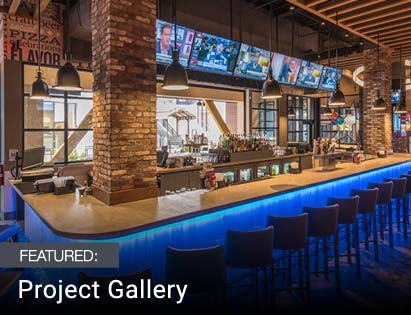Resources
NEMA Beam Angle Types
Directional light fixtures such as floodlights can vary wildly in their beam spread and how they output their light. Whether you need a narrow angle to highlight a particular architectural feature or a wide angle to wash a large expanse of a façade, using the correct beam angles play a vital role in the appearance and successful implementation of your lighting.
In order to help organize and standardize the distribution of light from floodlights and similar directional luminaires, NEMA classification types were established.
NEMA distributions are typically described by both the horizontal and vertical beam spread of a fixture. That beam spread is indicative of two planes of light where the intensity is 10% of the maximum candlepower (near the center beam) of the light. This is also called the “field angle”. If only one number is given, then the distribution is considered symmetrical.
(Article continues below...)
(Continued from above...)
Since the NEMA classification is based on a light fixture’s “field angle”, where the light is at the edge of the beam spread and is only 1/10th the full power of the fixture, it is a good idea to overlap the beams of each floodlight to increase uniformity.

In order to help organize and standardize the distribution of light from floodlights and similar directional luminaires, NEMA classification types were established.
NEMA distributions are typically described by both the horizontal and vertical beam spread of a fixture. That beam spread is indicative of two planes of light where the intensity is 10% of the maximum candlepower (near the center beam) of the light. This is also called the “field angle”. If only one number is given, then the distribution is considered symmetrical.
| Field Angle (Degrees) | NEMA Type | Description |
| <10 up to 18 | 1 | Very Narrow |
| >18 up to 29 | 2 | Narrow |
| >29 up to 46 | 3 | Medium Narrow |
| >46 up to 70 | 4 | Medium |
| >70 up to 100 | 5 | Medium Wide |
| >100 up to 130 | 6 | Wide |
| >130 and up | 7 | Very Wide |
(Article continues below...)
Related Items
(Continued from above...)
Examples
Here are some examples of how this nomenclature works:Asymmetrical Beam Spread
Actual field angle: 135° (H) x 72° (V)
NEMA Classification: 7 x 5

Actual field angle: 135° (H) x 72° (V)
NEMA Classification: 7 x 5

Asymmetrical Beam Spread
Actual field angle: 76° (H) x 51° (V)
NEMA Classification: 5 x 4

Actual field angle: 76° (H) x 51° (V)
NEMA Classification: 5 x 4

Symmetrical Beam Spread
Actual field angle: 35° (H) x 35° (V)
NEMA Classification: 3

Actual field angle: 35° (H) x 35° (V)
NEMA Classification: 3

In Use
Using fixtures of the appropriate NEMA classification type can help you get the right type of light distribution for your project. The standardized NEMA beam angle classification system provides a consistent method for establishing the light distribution of fixtures from across the industry. This is very useful if a manufacturer doesn’t publish their exact beam angle or field angle numbers, or if you are using different fixtures from different manufacturers in the same area. Sticking to the NEMA types will ensure you get the lighting you expect.Since the NEMA classification is based on a light fixture’s “field angle”, where the light is at the edge of the beam spread and is only 1/10th the full power of the fixture, it is a good idea to overlap the beams of each floodlight to increase uniformity.

 Cart
Cart










